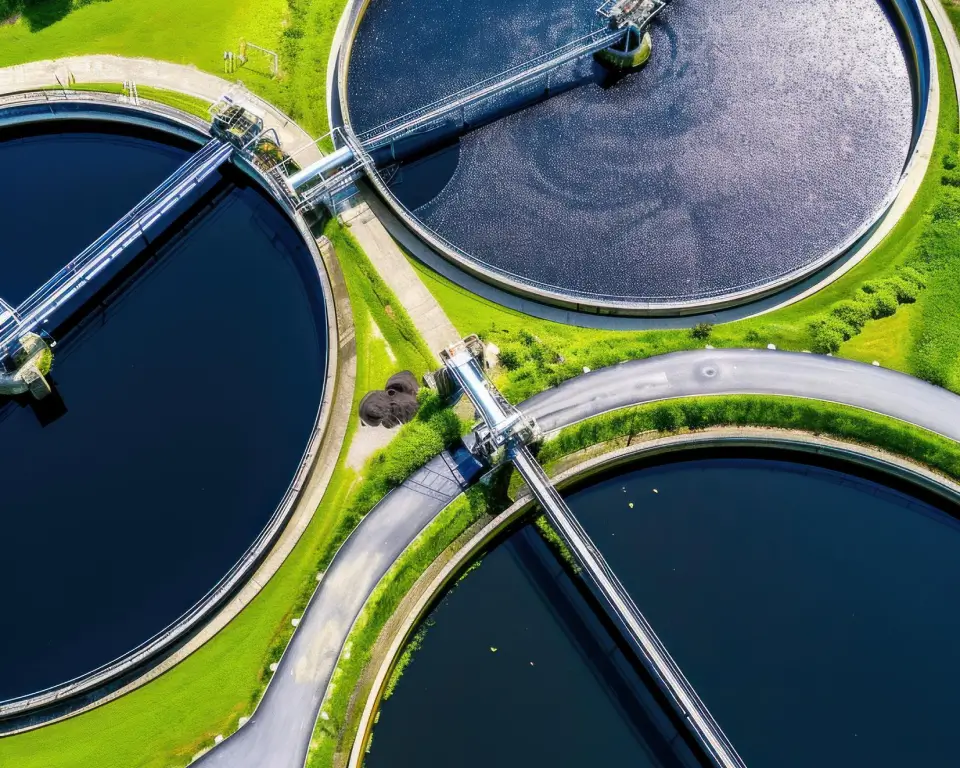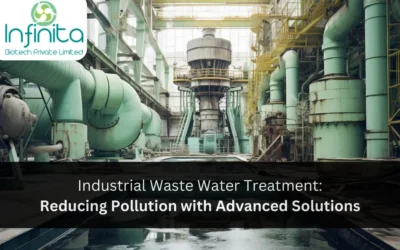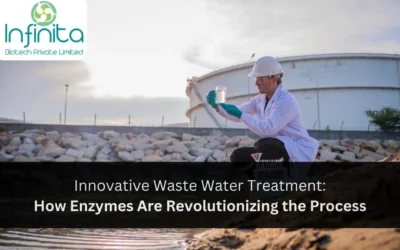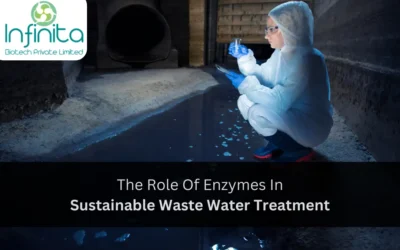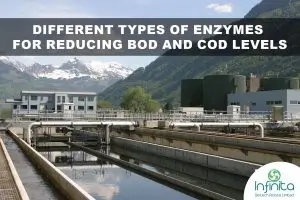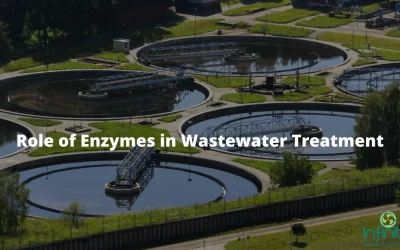What Enzymes Are Used In Wastewater Management?
Enzymes are biocatalysts created by living cells to cause explicit chemical reactions typically forming the different metabolic procedures of the cells. They are vital to the maintenance and activity of life. Enzymes are exceptionally explicit in their activity on substrates and frequently a wide range of Enzymes are required to bring about a sequence of metabolic reactions performed by living cells. Every strain of a microorganism creates countless enzymes which can be hydrolysing, oxidising or reducing and metabolic in nature. Microbial enzymes are associated with playing a vital job as metabolic catalysts, bringing about their utilization in different industrial applications. The end use market for industrial enzymes is amazingly far reaching with various commercial applications.
Microorganisms have served and keep on serving as one of the biggest and valuable sources of numerous enzymes. Many industrial procedures have a few drawbacks like low catalytic proficiency, absence of enantiomeric specificity for chiral synthesis, the prerequisite of high temperature, low pH and high pressure. Additionally, the utilisation of organic solvents prompts organic waste and toxins. Enzymes are progressively helpful for these applications as they work under mild reaction conditions (e.g. temperature, pH, atmospheric conditions), need not bother with protection of substrate functional groups, have a long half-life and, moreover, they work with unnatural substrates. Besides, enzymes can be chosen genetically and chemically changed so as to improve their key properties: stability, substrate explicitness and specific activity. On account of sea and river quality, contamination is basically brought about by the release of inadequately treated industrial and city wastewater.
On initial release, these wastewaters can contain elevated levels of inorganic pollutants which can be effortlessly biodegraded, however whose impact load on the biological systems, either in Total Suspended Solids (TSS), Biochemical Oxygen Demand (BOD), or Chemical Oxygen Demand (COD), might be in the tens of thousands mg/L. The attributes of wastewater can contrast impressively both within and among businesses. In the treatment of wastewater, the biological treatment seems, by all accounts, to be a promising technology. In contrast with different techniques for wastewater treatment, it additionally has the benefits of lower treatment costs with no additional contamination. The majority of waste treatment procedures can be classified as either physico-chemical or biological procedures. Enzymatic treatment falls between these two customary classes since it includes chemical processes dependent on the activity of biological catalysts. The likely benefits of enzymatic treatment as contrasted with conventional treatment include application to biorefractory compounds; activity at high and low contaminant concentrations; activity over a wide range of pH, temperature and salinity; absence of shock loading effects; absence of delays related with the acclimatization of biomass; decrease in sludge volume and the ease and effortlessness of controlling the procedure.
Types And Uses Of Microbial Enzymes:
1. Microbial Oxygenases:
Oxygenases are a part of the oxidoreductase group of enzymes and are used in the oxidation of reduced substrates by moving oxygen from atomic oxygen (O2) using FAD/NADH/NADPH as a co-substrate. These enzymes have a significant job in the metabolism of organic compounds as they increment their reactivity or dissolvability in water or lead to the cleavage of the aromatic rings. Oxygenases likewise intercede dehalogenation reactions of halogenated methanes, ethanes, and, ethylenes in association with multifunctional enzymes.
2. Microbial Laccases:
Laccases (p-diphenol: dioxygen oxidoreductase) involve a group of multicopper oxidases created by specific plants, fungi, insects, and microorganisms, that catalyse the oxidation of a wide scope of reduced phenolic and aromatic substrates with concomitant reduction of sub-atomic oxygen to water. Aromatic compounds, comprising of phenols and aromatic amines, involve one of the major classes of toxins and are severely controlled in numerous nations. They are found in the wastewaters of a wide assortment of industries including coal conversion, oil refining, resins and plastics, wood safeguarding, metal coating, colours and different synthetic substances, textiles, mining and dressing, and pulp and paper.
3. Microbial Cellulases:
During the enzymatic hydrolysis, cellulose is debased by the cellulases to reducing sugars that can be fermented by yeasts or microorganisms to ethanol. Cellulases cause the removal of cellulose microfibrils, which are produced during washing and the utilisation of cotton-based materials. In the paper and pulp industry, cellulase is utilised for the removal of ink during the recycling of paper. For as far back as a decade, there has been an increase in the interest for the enzymatic hydrolysis of cellulose. This intrigue comes from the benefits that such a procedure would offer, in particular, the conversion of lignocellulosic and cellulosic waste to a helpful energy source through the creation of sugars, ethanol, biogas or other vigorous end products.
Advantages Of Enzymatic Treatment Over Other Techniques:
The constantly growing use of enzymes is leading an increased interest for biocatalysts that show improved or new properties. By explicitly acting on certain recalcitrant pollutants, enzymes are able to remove them by precipitation or transforming them to different products. Biological (enzymatic) procedures have an additional advantage over conventional chemical/physical strategies as they are viewed as clean and green. The different physicochemical treatments like chemical precipitation, coagulation, flocculation, floatation, membrane filtration offer benefits like the simplicity of activity and control, flexibility to change in temperature and are quick. Yet their advantages, are exceeded by various disadvantages, e.g their high operational expenses because of the chemical compounds utilised, high energy utilisation and handling of expenses for sludge removal. Enzymes are exceptionally explicit and incredibly proficient catalysts. They can specifically corrupt a target pollutant without influencing different parts in the effluent. Moreover, they can work under mild reaction conditions, particularly temperature and pH. In this regard, enzymes beat the regular catalysts.
From an environmental viewpoint, enzymes are increasingly acceptable due to their biodegradability. On account of reactions wherein the objective pollutant is oxidized, the enzyme gets at least one electron from the substrate and gives these electrons to an electron acceptor. Thus, toward the end of the reaction, the enzyme is recovered and is accessible for the following reactant cycle. The biological origin of enzymes diminishes their unfavourable effect on the earth in this way making enzymatic wastewater treatment an ecologically sustainable technique.
Microorganisms produce a lot of enzymes with a wide scope of uses across industries, e.g. food, textile, leather pharmaceuticals, etc. In wastewater treatment, enzymes can be used to create remediation forms that are naturally less risky than conventional strategies. Their adaptable nature and proficiency even in mild reaction conditions gives them a lot of advantage over the regular physico-chemcial treatment strategies.
